Hassle-free has a great ring to it, especially when it is used to describe houseplants. Most plants and varieties of succulents require long lists of detailed instructions and resources that just get confusing and frustrating.
Just like humans and pets, they need special attention and care to survive and thrive, but they can’t let us know what it is they need and when they need it. Instead, they shrivel and die, and there’s nothing that can fix them.
Fortunately, there are some select plants that really are hassle-free. For those of us who enjoy some natural touches to our home decor, these plants are just what we need.
With one or several of these placed throughout our house, we can celebrate our wild agrarian side even if we don’t have a green thumb.
If you’re in this category, you are going to want to read through this selection of the best low light succulents. These little guys are going to revolutionize your indoor décor and boost your gardening life.
Burro’s Tail ‘Sedum Morganianum’
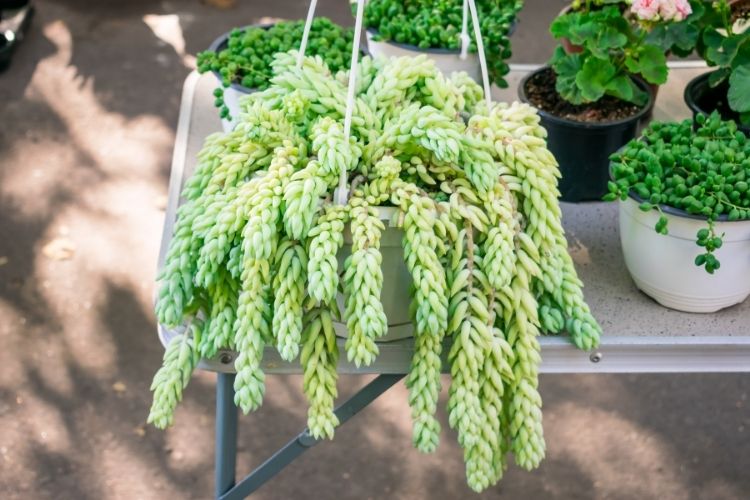
This unconventional-looking succulent is sure to turn anyone into an avid gardener. It is wonderfully uncomplicated to care for and to propagate.
How Big Can a Burro’s Tail Plant Grow?
Burro’s Tail plants can grow up to 4 feet long and 2 feet wide
Are Burro’s Tail Plants Susceptible to Any Pests?
Unfortunately, these plants do attract aphids, but they are easy to deal with. Simply spray them with a mixture of water and alcohol. It will be a ratio of 1-part alcohol and 4-parts water. There is also the option of wiping the leaves with Neem oil.
Pros
- It is drought tolerant
- It is not toxic
Cons
- It needs more water than other types of succulents
- It can attract aphids
What This Plant Needs
Fertilizer
As is the case with most succulents, Burro’s Tail doesn’t need a lot of fertilizer. It can take a dose of diluted fertilizer a couple of times during the warm growing season but should never be fertilized during winter.
Heat
This succulent thrives in temperatures ranging between 50- and 60-degrees Fahrenheit.
Light
Burro’s Tail can get burnt when set in direct sunlight so it is best to find it a place where it can receive bright light in partial sun.
Soil
A typical cactus/succulent potting mix that drains water well will work best for this plant
Water
Burro’s Tail plants are different from other succulents when it comes to their water needs. While it is drought tolerant and can get root rot from overwatering, it actually needs plenty of water to keep it looking healthy.
It is always a good idea to water these when the soil around it is dry and drain all excess water from the bottom of the pot. Never let it sit in water.
Ox Tongue Plant ‘Gasteria Prolifera’
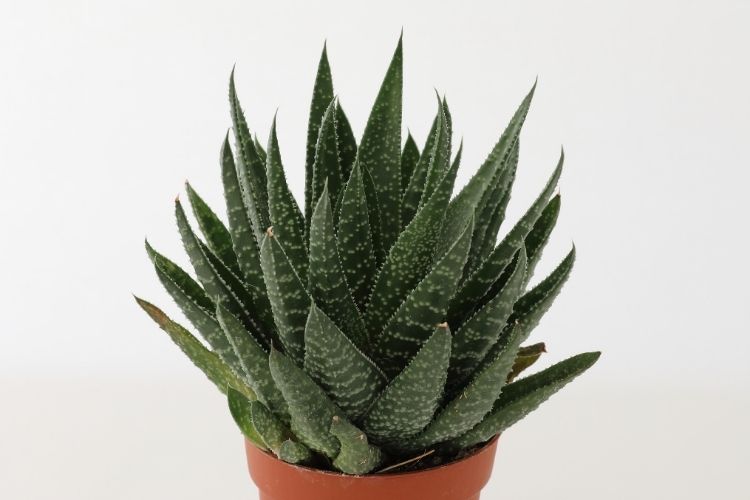
This is an aloe-like succulent, which is rather rare. Its leaves are long and rough and are often spotted. It is also extremely hardy and hassle-free.
What This Plant Needs
Fertilizer
Ox Tongue Plants actually benefit from fertilizer more than most other succulents. It is best to use a cactus fertilizer combined with compost once a year during the spring.
Heat
These plants prefer dry, warm weather. Frost and cold weather can kill them as can too much humidity.
Light
Keep Ox Tongue Plants away from hot direct sunlight but be sure they do get plenty of indirect bright light.
Soil
Whether they are planted in indoor containers or in garden plots, Ox Tongue Plants need sandy soil that drains well.
Water
These should be watered similarly to other succulents. They do not need much water and the soil around the plant should be dry before any more water is given to them.
Panda Plant ‘Kalanchoe Tomentosa’
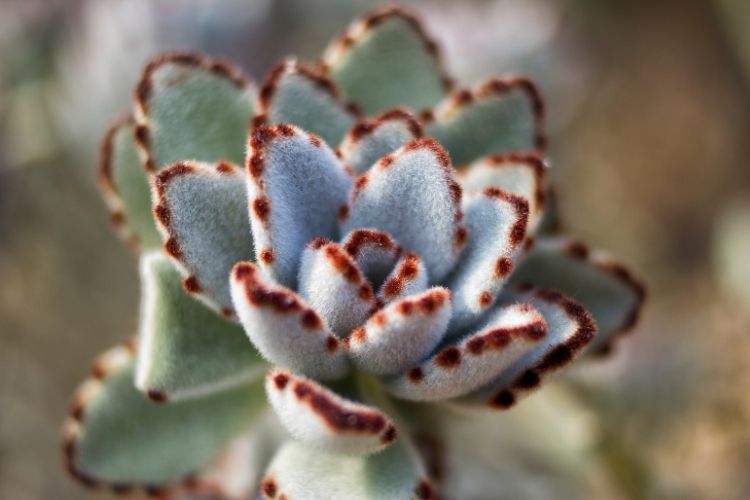
These may be the most adorable plants on our list. Their leaves are green, fuzzy, and tipped with a chocolate brown; altogether, it does remind one of a panda bear.
How Big Can a Panda Plant Grow?
These are relatively small plants that average around 1 – 2 feet in height and 2 feet wide.
Can Panda Plants be Propagated?
Yes, these plants are very easy to propagate. Simply cut a leaf or a stem from a healthy plant, let it dry for a few days, and then, plant it in a soil mix made for succulents. This process is best done during the spring season.
Pros
- It is a plant that is easy to care for
- It is a favorite for children’s rooms
- It does not grow to be very large
Cons
- It is toxic to animals
- It is easy to overwater
What This Plant Needs
Fertilizer
Use a balanced fertilizer diluted to half strength during the spring and summer months.
Heat
Panda Plants grow just fine indoors. Heat and humidity are not an issue. They can also be taken outside during the warm months of summer and spring as long as they are kept out of the hot afternoon sun.
Light
If kept indoors, place this plant in an area that receives medium to bright light. If placed outdoors, keep it away from hot direct sun.
Soil
Panda Plants need potting soil that is sandy and will drain well. It should also contain some volcanic rock known as perlite.
Product Recommendation: xGarden Cactus and Succulent Soil Mix
This soil mix is already prepared for indoor plants such as a Panda Plant. It contains the proper amount of perlite and peat moss and provides excellent drainage.
Water
Panda Plants are typical succulents that do not need a lot of watering. The soil surrounding the plant should be allowed to dry between watering.
Snake Plant ‘Dracaena Trifasciata/Sansevieria Trifasciata’
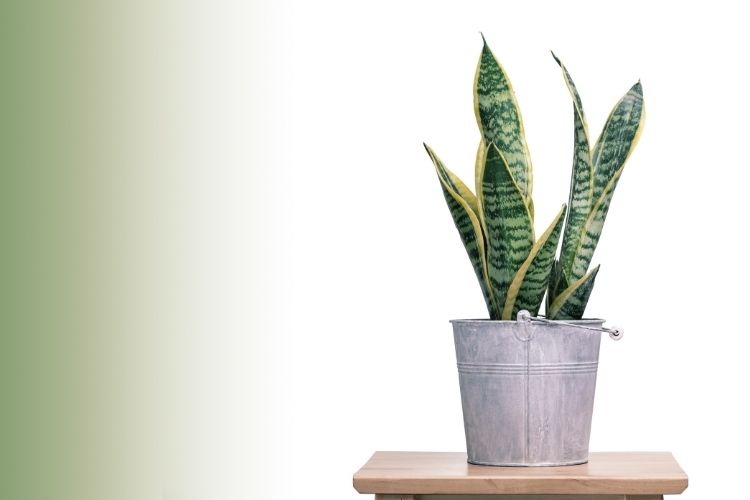
When hassle-free is mentioned in regards to plants, these succulents top the list. They almost seem to do better the more you neglect them.
Can Snake Plants Purify Air?
Research into these plants has concluded that they can remove formaldehyde and benzene from the air.
How Big Can Snake Plants Grow?
These plants, if taken care of, can be huge. They range in size from 6 inches to a full 12 feet tall.
Pros
- It is a very hassle-free plant
- It can be neglected and still thrive
- It can help purify the air inside a building
Cons
- It is toxic
- It can grow up to 12 feet in height
What This Plant Needs
Fertilizer
During the warm months of the growing season, Snake Plants can benefit from a mild cactus fertilizer or a fertilizer that is slow-release and diluted to half its strength. These plants should never be fertilized in the winter.
Product Recommendation:
Cute Farms Succulent, Cacti, & Aloe Fertilizer
This is an easy-to-use fertilizer that is gentle on delicate succulents. There is no mixing or mess with this brand.
Heat
This is the one area where these plants are a bit finicky. Snake Plants like temperatures ranging between 70- and 90- degrees Fahrenheit; they don’t do well in cold weather.
Light
Snake Plants are so amazing at surviving in the dimmest of conditions. While they do prefer some indirect light and can adapt to full sunlight, they will surprise you with how well they grow in dark indoor areas. These things are truly hassle-free when it comes to lighting issues.
Soil
These plants need loose, sandy soil that will not get compacted or hold water. Try using an all-purpose cactus/succulent potting mix.
Water
Just like nearly every other succulent, Snake Plants are drought-tolerant and should not be overwatered. In fact, it is best to underwater these plants since too much water can kill them. These plants are not fussy.
Zebra Haworthia
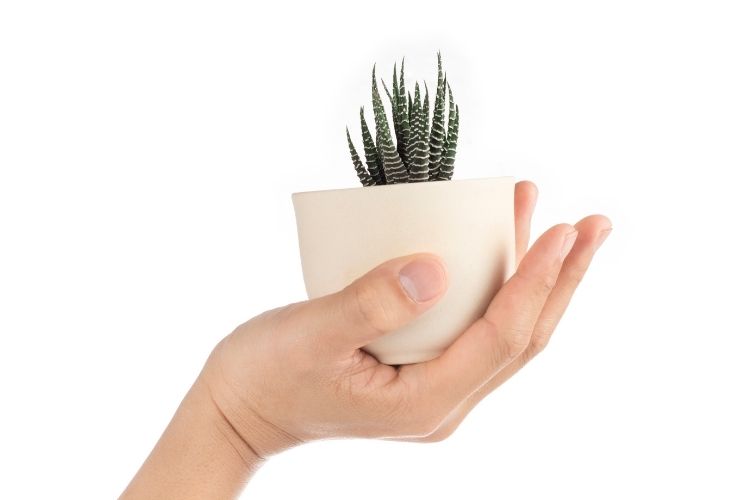
If you are new to plants, this may be the perfect one to start with. It is very forgiving and very easy to care for. It does not require much from its caretaker.
Are Zebra Haworthia Toxic?
These are non-toxic plants
How Big Do Zebra Haworthia Grow?
These are very tiny succulents and most varieties only grow up to 5 inches tall; however, there are some varieties that can reach 20 inches
Do Zebra Haworthia Go Dormant?
Yes, when these plants are outside during the hot summer months, they will go dormant. However, because the temperatures don’t vary much, they usually do not go dormant when they are kept indoors.
What This Plant Needs
Fertilizer
This is another succulent that doesn’t need fertilizer very often. A diluted cactus fertilizer once a year during either the summer or spring can boost its growth, but otherwise, fertilizer is not a necessity.
Heat
Zebra Haworthia prefers a temperature range of 60 to 85 degrees Fahrenheit.
Light
This amazing plant can handle low to medium light when kept indoors. However, if placed in an indoor window with access to plenty of sunlight, it will become tinged with beautiful orange and red hues.
When kept outdoors, it should be placed in a location where it can get 4 to 6 hours of light. It should not be left in hot direct sunlight since this will burn its very sensitive leaves.
Soil
Zebra Haworthia has soil needs that are similar to any other succulent. The soil needs to be loose and sandy so it is able to drain water well. Any cactus/succulent potting mix will work.
Water
When it comes to the Zebra Haworthia succulent, it is very important to water it appropriately. It only needs to be watered when the soil is dry, but it should be watered thoroughly. Also, it is important that the plant’s leaves do not get wet or they will get mushy and rot away.
Water Zebra Haworthia by filling its pot until water runs from the bottom of it. Always get rid of the excess water and never let the plant sit in water.
Recommended Product: UpBloom Plant Water Bottle
Use this water bottle to fully soak the soil around your Zebra Haworthia without soaking its leaves.
Buying Succulents
Now that you know about some of the hassle-free succulents out there, it is time to get one, two, or twenty for your home and garden. If you’re ready to pay for some plants, here are the best places to find them.
- Local Garden Shops
- Farmer’s Markets
- Regional or National Lawn & Garden Stores
- Online
Displaying Succulents
Once you get your prized plant, you are going to want to display it in the best light, figuratively and literally, possible. If you plan to keep them indoors, be sure to buy planters that are easy to move and will allow water to drain well. You might also figure in how they look next to your other décor as well.
Sharing Succulents
With succulents all over your home now, your friends are sure to ask you for advice or a succulent for their home.
You may have noticed that most succulents are easy to propagate, so this will not be a problem. In fact, these shared stems and shoots are perfect to bring to a housewarming party or as a hostess gift.
FAQs
Question: What Is a Succulent?
Answer: Succulents are plants that are drought tolerant and store water inside their leaves or stems. Cacti are a subgroup of succulents, but not all succulents are cacti.
Question: How Can I Know If the Type of Succulent I Have Will Thrive Outside?
Answer: The best way to know if your succulent is going to be able to spend all year outside is to check the USDA hardiness zone website. Once you know which zone you live in, you simply need to find out what grows best in that zone. You can either check to see if your specific succulent can grow outside in that zone or use a garden growing reference website.
Question: How Can I Change the Color of My Succulents?
Answer: Most succulents are always green, but there are a few varieties that will turn brilliant colors when places under healthy stress. To do this, you simply need to provide them with more direct sunlight or less water. Of course, you should be careful to not overdo these stressors or it will kill the plant.
A few of the succulent types that will change color under healthy stress are:
Anacamperos Purple Giant
Echeveria Black Prince
Graptoveria ‘Bashful’
Some Closing Words
You don’t need a green thumb to have greenery in your home and garden. Succulents are designed for everyone, even unskilled gardeners, to grow and enjoy. If you are new to gardening, this is your moment: begin your garden today.
If you are an experienced gardener, this is also your moment: celebrate your garden today. No matter where you live, you can enjoy the beauty of nature.
Read more interesting articles here:
- Agave Blue Glow: All You Need To Know In Care and Growth
- Best Places to Buy Succulents Online
- Cephalocereus Senilis (Old Man Cactus) How To Grow and Care 101
- Lophocereus Marginatus (Mexican Fence Post Cactus) - January 10, 2022
- Best Cactus Fertilizer Guide - January 9, 2022
- Selenicereus Grandiflorus (Queen of the Night) - January 3, 2022


